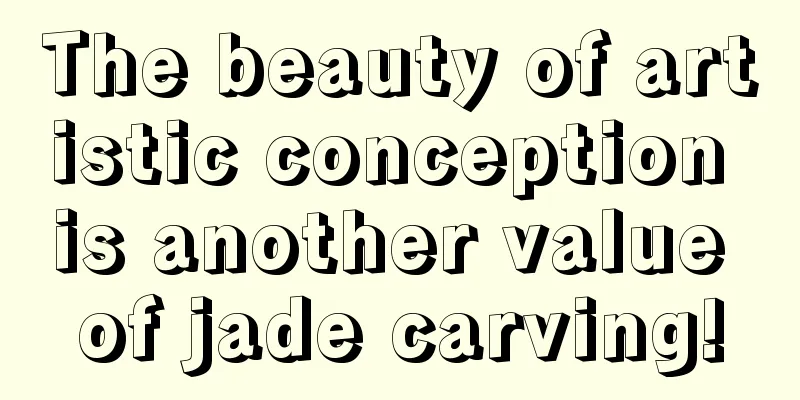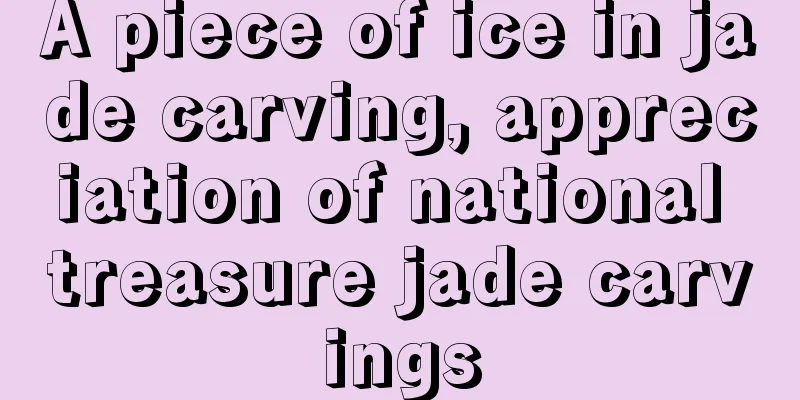What are the detailed steps in jade processing? How complicated is it to make jade into jewelry?

|
As the saying goes, "30% of jade is made of material and 70% of workmanship", "Look at the shape from a distance, look at the jade up close, and pick it up to see the knife work", "If jade is not carved, it will not be made into a useful object". This shows the importance of carving to jade. The quality of jade peeling technology also has a great impact on the value of the piece. If a piece of high-quality jade is roughly carved and has no spirit, its price will be greatly discounted. On the contrary, if an ordinary piece of jade is well carved and its own flaws are effectively used, its value may be greatly reversed. Next, let's take a look at how many steps a piece of jade goes through to the final product. Material selection is the first step in jade processing, and it has a very important impact on the subsequent processing links. Because the raw materials of jade mostly have skin, it has a "gambling nature". Jade is also the only jade variety with skin. People call gambling on stone is gambling on jade. The selection of materials is determined by what finished product is to be processed, and the requirements for material selection vary for different finished products. If you are making ornaments or hand-held items, you need to choose larger materials; if you are making general pendants, ring faces and other small items, you need better materials. The second step in jade processing is cutting. When cutting, it is necessary to observe the surface characteristics of the jade, such as the distribution and direction of color, the distribution and development of cracks, and the analysis and estimation of the internal and external changes in water quality. If the surface of the jade is good and useful for subsequent carving, it cannot be peeled off at will. Sometimes using different colors on the surface of the jade for design and carving can add color to the jade and increase the value of the jade. Next, use a cutting machine to cut the jade according to the required size. The first choice for slicing is bracelets, based on the principle of not destroying the color of the jade. The larger the slices, the better. The rest can be made into pendants and the like. The third step in jade processing is design. Generally, the design of jade can be done directly by drawing on the jade material. However, if some jade materials are large, precious, or have complex colors and materials, it is necessary to repeatedly consider the design on the drawing to retain the jade material to the greatest extent and highlight the characteristics of the jade. The fourth step in jade processing is rough carving, which is also called embryo making. After drawing the picture, use tools to carve out the rough outline first, and then carve the large internal surface. When engraving, you can replace various diamond drill bits according to your needs. Diamond drill bits are differentiated by mesh size. The fifth step in jade processing is fine carving. After rough carving, the approximate outline and carving direction have been determined. The carving and washing during rough carving make the surface design blurred, so you can use an oil pen to redraw the picture on the jade material, mark the carving details and carving techniques, and then carry out the carving of the details. The purpose of fine carving is to further refine the shape of the jade material. The sixth step in jade processing is polishing. Currently, there are two main jade polishing methods on the market: machine polishing and hand polishing. Machine polishing is generally aimed at jade carvings of average quality. A large number of works can be processed in a short period of time, such as some ring faces, beads, etc. Hand polishing requires polishing each piece one by one, which is time-consuming and expensive, but jadeites with fine workmanship and good materials tend to be hand polished. The last step in jade processing is decoration. After polishing, it becomes a finished product and can be sold directly, or it can be sold with some decorations as needed, such as adding ropes to some handles, or inlaying some carvings into necklaces, rings, brooches, etc. Some ornaments will be equipped with a base such as a wood carving. fcgc66 fcpf18 |
>>: Jade processing methods, these three main jade carving techniques need to be understood
Recommend
What are the buying tips for novices when choosing to buy jadeite?
For a novice buying jade for the first time, ther...
How can you continue to play with jade if you can’t tell whether the jade has become “uglier” or “mutated”?
I don’t know if you have ever encountered these t...
Jadeite cut from the Damakan raw stone is also beautifully carved like this
What I want to share with you today is a jadeite ...
The jade “Three Stars and Two Gods” have extremely good luck, bringing you happiness, wealth, longevity, happiness and fortune!
What are the “Three Stars and Two Gods”? In Taois...
If these 3 phenomena appear on jade, 90% of them are likely to be natural jade.
Many friends have asked me that they were very ca...
Are you afraid of being cheated by the Jade Fairy Picture? Come and learn from the masters to develop your Fiery Eyes and Golden Pupils!
The liar won’t take a holiday unless the earth ex...
Jade jewelry is exquisite and beautiful. How much do you know about the meaning of its name?
We all know that jadeite appeared in my country d...
Jade carving, the whole process from rough design to finished product, this is craftsmanship!
Jade carving itself is a design and an idea. Only...
Jade focuses on quality, not brand! Don’t be fooled by the high-priced and low-quality jadeite sold in jewelry stores!
Many of us may like to buy jewelry, but jade is a...
Don’t let your jade lose water!
Many girls have a lot of jewelry, so they choose ...
Multiple Matching of Jade Pendants
Jade is the king of jade and a masterpiece of nat...
Nearly perfect jade carving and design, beautiful jade carving
A successful jade work is inseparable from perfec...
What color jade ring is best?
The "green" color of jadeite has the hi...
What are the floating flowers in jade? Is it good or bad to have floating flowers in jade?
In recent years, floating flower jadeite has been...
All wealthy families have jade ornaments, which have great collection potential. How should we choose?
Even if you don't leave your home, you can st...









